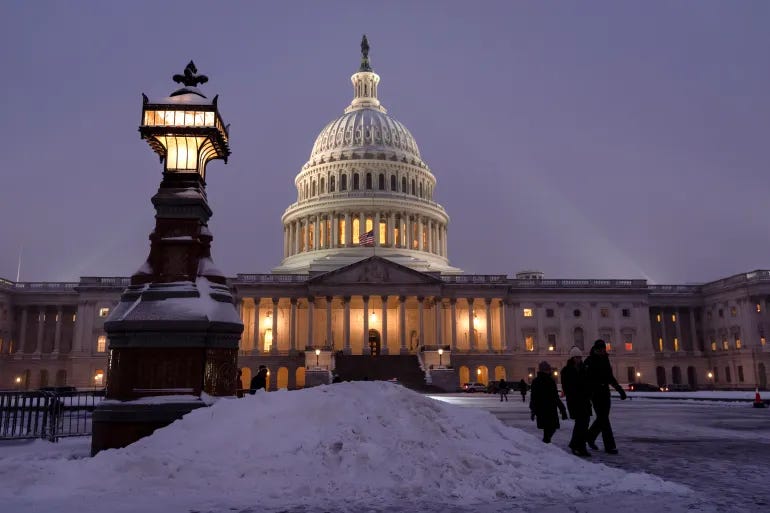Trump Moves Inauguration Ceremony Indoors Amid Freezing Temperatures
Facing extreme cold, President-elect Donald Trump opts for an indoor ceremony on one of the coldest inauguration days in modern history.
President-elect Donald Trump has decided to relocate his inauguration ceremony indoors due to an incoming Arctic blast, making it one of the coldest inauguration days in recent memory. Traditionally held outdoors on the marble steps of the U.S. Capitol in Washington, D.C., the ceremony will now take place beneath the Capitol Rotunda for safety reasons.
Meteorologists predict subzero temperatures on Inauguration Day, and Trump announced on Friday that moving the event inside was necessary to ensure the well-being of those attending. "There is an Arctic blast sweeping the country. I don’t want to see people hurt or injured in any way," Trump shared on Truth Social. He expressed concerns for the safety of the law enforcement, first responders, police K9s, horses, and the hundreds of thousands of attendees expected to brave the cold for hours.
Originally planned for the Capitol’s steps, the inauguration will now occur under the Rotunda, known for its iconic dome and historical paintings. Only one other president, Ronald Reagan, has been inaugurated inside the Capitol Rotunda. Reagan’s second inauguration in 1985 took place under similarly frigid conditions, with temperatures as low as -14°C (7°F), even colder than the projected -6°C (22°F) for Monday.
Trump acknowledged the challenge of hosting such a large event indoors. With roughly 250,000 people expected to attend in person, the Rotunda's confined space would limit the number of guests who could witness the ceremony up close. However, Trump reassured supporters that many dignitaries and invited guests would still be present inside. The event will be live-streamed for the public, with attendees encouraged to watch at the nearby Capitol One Arena. Trump also mentioned that he would join the crowd there after the ceremony for a “victory rally” on Sunday.
Historically, the U.S. Capitol has hosted inaugurations on 55 occasions, with 34 of them held on the East Portico, an outdoor colonnade. In rare instances, such as during extremely cold weather, the ceremony has been moved indoors to the Senate or House chambers.
Cold weather has disrupted past outdoor inaugurations. In 1873, President Ulysses Grant’s ceremony saw military personnel collapse due to the cold, and his speech was nearly inaudible. Similarly, historians speculate that the wet, chilly conditions on William Henry Harrison’s inauguration day contributed to his death from pneumonia just one month later. His inaugural address was the longest in U.S. history, but his presidency was the shortest.


